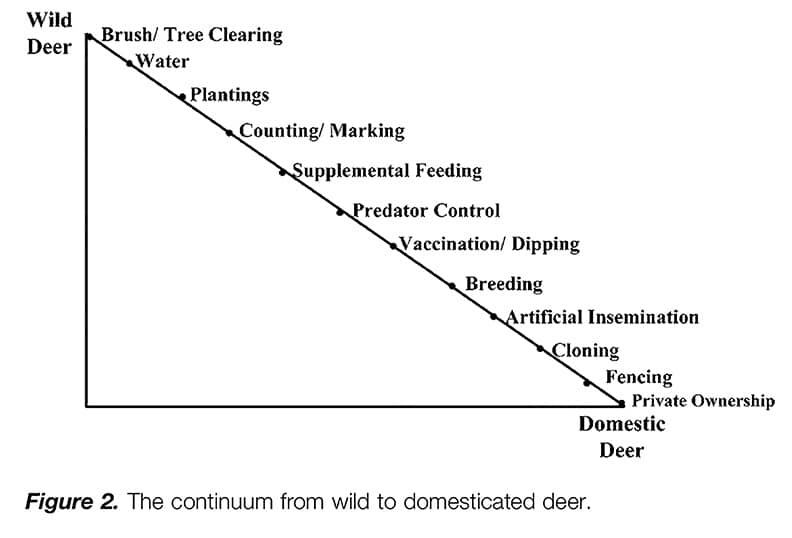WHAT’S THE DIFFERENCE BETWEEN THE HUNTER AND THE SHOOTER?
BY DR. NORMAN GERMAN
Today, the old hunter-gatherer has been supplanted by a curious new species, the hunter-thinker, whose ultimate quarry is the ideal hunt.
To use fishing as an analogy for the fair hunt, we might question the sportsman who caught bass from his 40-gallon coffee-table aquarium. Likewise, some will think that shooting supplement-fed deer in a high-fence enclosure is tantamount to shooting Bambi’s mother tethered to a post.
Already unhappy with people in the 1930s who declared big-game fishing unfair, Ernest Hemingway, speaking of marlin, said, “Of course, it could never be considered an equal contest unless the angler had a hook in his mouth, as well.” Applied to hunting, this criterion would require the deer to be shooting back at the hunters — an obvious absurdity.
So what ethical hunters really want, given the ever-increasing array of high-tech gadgetry, is fair pursuit, which will nevertheless be defined differently by different hunters.
Brown and Cooper — see the charts included with this story — have helped us out by delineating arguments against baiting and feeding white-tailed deer. With the polls now all but closed, the elusive “facts” seem to indicate that supplemental feeding causes overpopulation, decline in deer condition, degradation of habitat, facilitation of disease transmission and both intra- and inter-species aggression. Plus, high fences limit open landscape, whether range or forest — a crucial part of the deer’s evolved escape mechanism.
In defining what I think is fair sport, I can immediately dispense with two extremes. The neo-primitivist might advocate starving up a tree for three days in a leopard-skin tunic until he has a chance to vine-swing onto the back of a majestic buck and bludgeon him to death with a genuine, if anachronistic, stone axe from the Olduvai Gorge, all while avoiding the treachery of hoof and antler. In 1969, The Beatles’ John Lennon sang “Give Peace a Chance”; now, some peaceniks would like to give death a chance, thinking it only “fair” that the hunter, too, should have his chance to be wounded, perhaps even mortally.


On Brown and Cooper’s descending continuum from hunter to shooter, I find myself leaning towards those who use grunts and calls but away from those who employ laser sights and listening devices. On the continuum from wild to domesticated deer, I tentatively placed myself between vaccination/dipping and breeding.
However, it occurred to me that although dipping and vaccination seem like good procedures for the short-term, they might redefine the “survival of the fittest” so that the long-term health of the local population could be harmed under “normal” conditions. And, although predator control seems like a good idea, it should be minimized. As Aldo Leopold long ago taught us, removing keystone predators from an ecosystem causes a trophic cascade that not only alters animal interactions but adversely affects vegetation and even the water quality of streams.
High fencing, too, changes the nature, and therefore the relationship, of both the enclosed and the encloser to the point that the techno-man has replaced the skills of the hunt with the skills of fine-tuning his gizmos. As with the former skills, some “hunters” are better and some are worse at the latter skills. Thus, while enclosing supplement-fed deer, we are also enclosing ourselves inside an increasingly uncomfortable ethical boundary with no clear or universally accepted moral compass to guide us.
If, in the past, deer hunters have been unfairly stigmatized by the Bambi Syndrome, they have now tattooed themselves with their own “Shoot Me” sign, encouraging the non-hunting public to put more pressure on hunters if they continue to treat deer not as worthy quarry but as insensate avatars moving unsuspectingly across a pseudo-natural video game terrain. Soon, non-hunters might more forcefully declare that shooting deer with a camera is superior to shooting them with rifles. As Brown and Cooper imply, when wildlife management deteriorates to animal husbandry, we might as well step onto the back porch with our tripod-supported .308 and bag a few cows in the back pasture.
Dr. Norman German is a professor at the University of Louisiana at Lafayette. He is presently working on a master’s in wildlife biology.
Editor’s note: Charts come from Robert D. Brown and Susan M. Cooper, “The Nutritional, Ecological and Ethical Arguments Against Baiting and Feeding White-Tailed Deer” in the Wildlife Society, vol. 34, no. 2, pages 519-524.















Comments are closed.